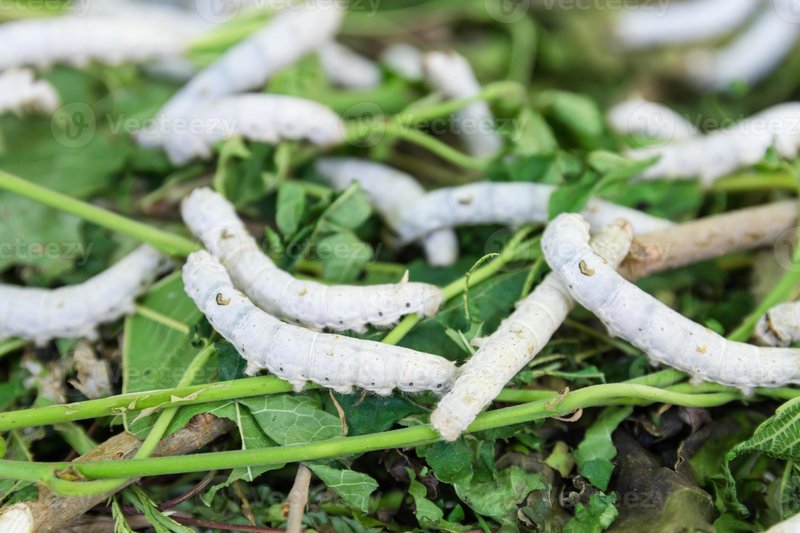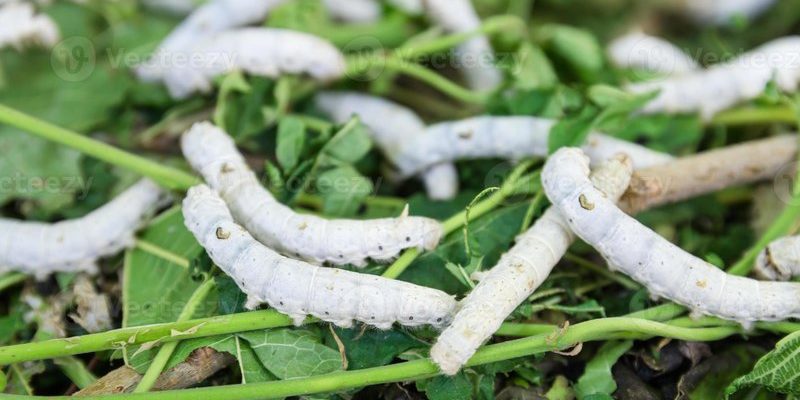
If you’re stepping into the world of sericulture or just curious about how to keep your silkworms healthy, understanding common silkworm diseases is essential. Knowing how to spot and prevent these ailments can mean the difference between a thriving batch of silkworms and a struggling one. Let’s dive into the most common issues they face and how you can keep your little silk-producing friends happy and productive.
1. Bacterial Infections: The Silent Killers
Bacterial infections are one of the top concerns for silkworm farmers. These infections can spread rapidly and can be lethal if not addressed quickly. The most notorious of these is *Bacillus thuringiensis*, which can wreak havoc on silkworm larvae, leading to severe illnesses and sometimes death.
The tricky part? Bacterial infections can often go unnoticed until it’s too late. Look out for signs like reduced appetite, lethargy, or a noticeable change in behavior. You might notice your silkworms aren’t moving as much or their feeding patterns are off. This is your cue to act.
Prevention is key in this case. Ensure you maintain a clean environment for your silkworms. Regularly cleaning their habitat and providing fresh, uncontaminated mulberry leaves can make a huge difference. Also, consider rotating your silkworm batches to avoid the buildup of harmful bacteria.
2. Viral Infections: Unseen Threats
Viral infections are another major concern. One well-known culprit is the *Nuclear Polyhedrosis Virus (NPV)*. This virus affects the silkworm’s nervous system and can cause sudden mortality. Imagine going from a healthy, munching larva to a lifeless one in no time—it’s chilling.
You might be wondering how to spot a viral issue. Unfortunately, symptoms can be subtle, including weakness, uncoordinated movements, and sometimes, even a change in coloration. If you see these signs, it’s essential to isolate the affected individuals immediately.
To prevent viral infections, maintaining optimal environmental conditions is crucial. Factors like humidity and temperature can impact your silkworms’ immunity. Ideally, keep your silkworms in a well-ventilated area with controlled temperature and humidity levels. It’s like creating a cozy home for them—one that promotes their health!
3. Fungal Infections: The Hidden Danger
Fungal infections can also pose serious risks. Fungi like *Aspergillus* can invade silkworms, leading to conditions such as “silkworm paste disease,” which often results in economic losses in sericulture. Imagine if your favorite restaurant had a bad batch of bread; it could ruin the whole dining experience!
Symptoms of fungal infections may not be evident until significant damage is done. Look for yellowish or brown spots on the silkworms or on their leaves. These can indicate fungal growth, which is never a good sign.
To keep fungi at bay, ensure good hygiene in the silkworm rearing area. Proper drying of leaves and controlling moisture levels can go a long way. Once again, think of your silkworms as guests—they need a clean and inviting space to thrive!
4. Nutritional Deficiencies: The Silent Saboteurs
Just like we need a balanced diet for good health, silkworms require the right nutrition to grow strong. Nutritional deficiencies can lead to poor development, reduced silk quality, and overall weak larvae. If silkworms aren’t getting enough nutrients, it’s similar to trying to run a marathon on an empty stomach—eventually, they will falter.
Make sure you’re providing a fresh supply of quality mulberry leaves. If the leaves are old or lacking in nutrients, silkworms won’t flourish. Signs of nutritional deficiencies can include stunted growth or abnormal development. You might even notice your silkworms are less robust and vibrant, which isn’t a good look!
To combat this, consider supplementing their diet with nutrients if necessary. There are specialized feeds available that can enhance their growth and health. Just like you wouldn’t skimp on your meals, don’t skimp on your silkworms’ diet!
5. Stress Factors: The Underrated Threat
Stress is another factor that often gets overlooked. Yes, even silkworms can experience stress! Conditions like overcrowding, poor ventilation, and abrupt changes in temperature can lead to stressed silkworms. Think about it: when you’re stressed, you don’t eat well or sleep well. The same goes for these little guys.
When silkworms are stressed, they become more susceptible to diseases, less productive, and may even stop spinning silk altogether. If you see lethargy or reduced activity levels, it might be time to assess their environment.
To minimize stress, ensure they have appropriate space and good air circulation. Keep their environment stable and avoid sudden changes. Creating a calm and stable environment is crucial for their well-being.
6. Tips for a Healthy Silkworm Farm
Keeping silkworms healthy boils down to a few fundamental practices. Here’s a quick recap of what you can do to help prevent these common diseases:
- Maintain Hygiene: Regularly clean their living space and remove waste.
- Quality Diet: Provide fresh, nutritious leaves and consider supplements.
- Control Environment: Monitor temperature and humidity to keep conditions stable.
- Isolate Affected Individuals: If you notice sick silkworms, separate them to avoid spreading illness.
- Rotate Batches: To prevent bacteria and fungi buildup, rotate your silkworm batches periodically.
By focusing on these areas, you can create a healthier environment for your silkworms, leading to better silk production and a more enjoyable experience for you as a cultivator.
Final Thoughts: Nurturing Your Silkworms
In the end, keeping your silkworms healthy is about understanding their needs and being proactive. They rely on you for their care, and your attentiveness can prevent many diseases. Just remember, it’s all about creating the best possible environment for them to thrive.
As you embark on your silkworm journey, keep these common diseases and prevention strategies in mind. With a little love and care, your silkworms will reward you with beautiful silk—just like a well-tended garden yields vibrant blooms. Happy farming!

